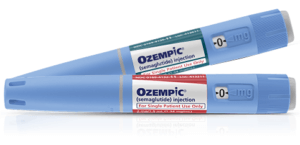Progress in the development of new medications like enzalutamide (brand name Xtandi) has significantly improved treatment options for aggressive prostate cancer and outcomes are highly encouraging.
In this article, we are going to briefly explain what enzalutamide does, who it’s for, and how it helps. IsraelPharm provides access to FDA-approved treatments, including enzalutamide, helping patients maintain consistent, affordable therapy.
There’s new hope for prostate cancer patients
The progress in prostate cancer treatment over the last decade has been remarkable. Following extensive reseach and clinical trials like PREVAIL, PROSPER and ARCHES, doctors now have more tools to help manage the illness, slow down progression, and protect quality of life. Research continues to expand what can be offered to patients, and several major steps forward have already changed the outlook for many men. Important advances include:
- Survival and quality of life for men with prostate cancer continue to improve.
- New approaches such as PARP inhibitors, radioligand therapies, and immunotherapies offer more options for aggressive cases.
- Genetic testing for mutations like BRCA1 and BRCA2 helps match patients with the most effective treatments.
- Clinical trials continue to improve how treatments are combined and when they are used.
Understanding more about prostate cancers
Prostate cancer is not a single condition. Some forms grow slowly, while others become aggressive and spread quickly. Understanding these differences helps explain why certain treatments, including enzalutamide, can play a major role in improving outcomes.
- There is a clear difference between benign prostatic hyperplasia (BPH) and aggressive prostate cancer.
- Aggressive cancers that keep growing despite hormone therapy are called castration-resistant prostate cancers.
- Metastasis occurs when cancer spreads to distant parts of the body.
- Younger men of African descent, and those with a strong family history may have a higher risk.
- Cancers with BRCA-related DNA repair mutations may respond differently to targeted therapies.
- High PSA levels or a high Gleason score often point to a need for stronger treatment.
- A Gleason score is a simple way for doctors to describe how aggressive a prostate cancer is. When a biopsy is taken, a pathologist looks at the cancer cells under a microscope and compares them to normal prostate tissue. The two most common patterns of cancer cells are each given a grade from 3 to 5, with 3 looking the most like healthy cells and 5 looking the most abnormal. These two numbers are then added together to form the Gleason score. A lower score means the cancer is likely to grow more slowly, while a higher score suggests a faster-growing, more aggressive cancer. This score helps guide decisions about treatment and follow-up.
How is prostate cancer diagnosed?
Doctors use several tests to understand what is happening in the prostate and to check whether cancer is present. These tests help guide treatment decisions and give a clearer picture of the overall situation.
- Digital rectal exam (DRE): A doctor or nurse gently inserts a gloved, lubricated finger into the rectum to feel the prostate for lumps or unusual firmness.
- PSA blood test: Measures the level of PSA, a protein made by the prostate. Elevated PSA can suggest cancer, but it can also increase with infections, inflammation, or an enlarged prostate (BPH).
- PSMA PET scan: A small amount of a tracer that attaches to prostate cancer cells is injected into the bloodstream. A scanner then highlights areas where cancer may have spread to bones, lymph nodes, or other organs.
- Transrectal ultrasound: A small probe is placed in the rectum to create an image of the prostate using sound waves. Doctors often use this scan to help guide biopsy needles.
- Transrectal MRI: A probe placed in the rectum helps produce detailed MRI images of the prostate and nearby tissues. This can show whether cancer has spread outside the prostate and may also guide biopsies.
- Transrectal biopsy: A thin needle is inserted through the rectum to remove small tissue samples from the prostate. A pathologist examines these samples under a microscope to confirm whether cancer is present.
Meet enzalutamide: a next-generation androgen receptor inhibitor
Enzalutamide is one of the most important steps forward in modern prostate cancer care. It blocks the way testosterone fuels cancer growth. Because testosterone can stimulate cancer cells, reducing its activity can slow the disease down. Enzalutamide offers a more targeted and effective way to interrupt this growth pathway.
- Blocks testosterone from helping cancer cells grow.
- Offers a more precise approach than older hormone therapies.
- Is taken as a once-daily oral capsule.
Who can benefit from enzalutamide?
- Men with metastatic castration-resistant prostate cancer (mCRPC).
- Men with non-metastatic CRPC.
- Some men with metastatic hormone-sensitive prostate cancer (mHSPC).
When cancer no longer responds to standard hormone suppression, enzalutamide can help slow or stop its progression.
Clinical evidence: how enzalutamide improves outcomes
Large trials such as PREVAIL, PROSPER, and ARCHES have shown that enzalutamide makes a meaningful difference for many patients. These studies found:
- Longer survival for men taking enzalutamide.
- Significant delays in disease progression.
- Improved independence and daily functioning.
- Reduced need for chemotherapy.
Side effects of Xtandi and what to expect
Most patients tolerate enzalutamide well, but like all treatments, it may cause side effects. Some of the more common ones include:
- Fatigue
- Hot flashes
- Mild nausea
- High blood pressure
Serious side effects such as seizures or falls are rare, and doctors monitor patients closely. Treatment should never be stopped or changed without professional guidance.
Access to Xtandi and managing costs
While enzalutamide can change lives, it is expensive in the United States. IsraelPharm provides legitimate, licensed access to the original brand at a lower cost. Affordability can make a difference in long-term adherence and outcomes.
Take away message — enzalutamide gives hope
- Targeted hormone therapies like enzalutamide have greatly improved survival expectations.
- They help men live longer while maintaining a better quality of life.
IsraelPharm is proud to help patients access the medications they need safely and affordably.
Frequently asked questions about enzalutamide
What does enzalutamide do for prostate cancer?
Enzalutamide blocks the signals that testosterone sends to prostate cancer cells. These signals help the cancer grow, so blocking them slows the disease down. This is especially important for cancers that continue to grow even when testosterone levels are already lowered. By interfering with this pathway, enzalutamide helps many patients stay stable for longer periods and may delay the need for chemotherapy.
Is enzalutamide used for early-stage prostate cancer?
Enzalutamide is mainly used for advanced forms of prostate cancer, especially cases that no longer respond to hormone-lowering treatments. Early-stage cancers are usually treated with surgery, radiation, or active surveillance. However, researchers continue to study whether medicines like enzalutamide may be useful earlier in the disease.
How long do patients stay on enzalutamide?
Many patients take enzalutamide for months or years as long as it keeps working and side effects stay manageable. Doctors monitor PSA levels, scans, and symptoms to see how well the treatment is performing. Decisions to switch or stop therapy should always be made with a healthcare professional.
Can enzalutamide be combined with other treatments?
Yes. Enzalutamide is often used alongside other treatments such as hormone therapy, radiation, or targeted medicines. The choice depends on how aggressive the cancer is, whether it has spread, and whether genetic testing reveals certain markers like BRCA mutations. Each treatment plan is personalized.
What are the most common side effects of enzalutamide?
Common side effects include tiredness, hot flashes, mild nausea, and increased blood pressure. Most of these are manageable. Rare side effects such as seizures or balance problems require monitoring. Regular check-ins with a healthcare professional help ensure the benefits continue to outweigh any risks.















